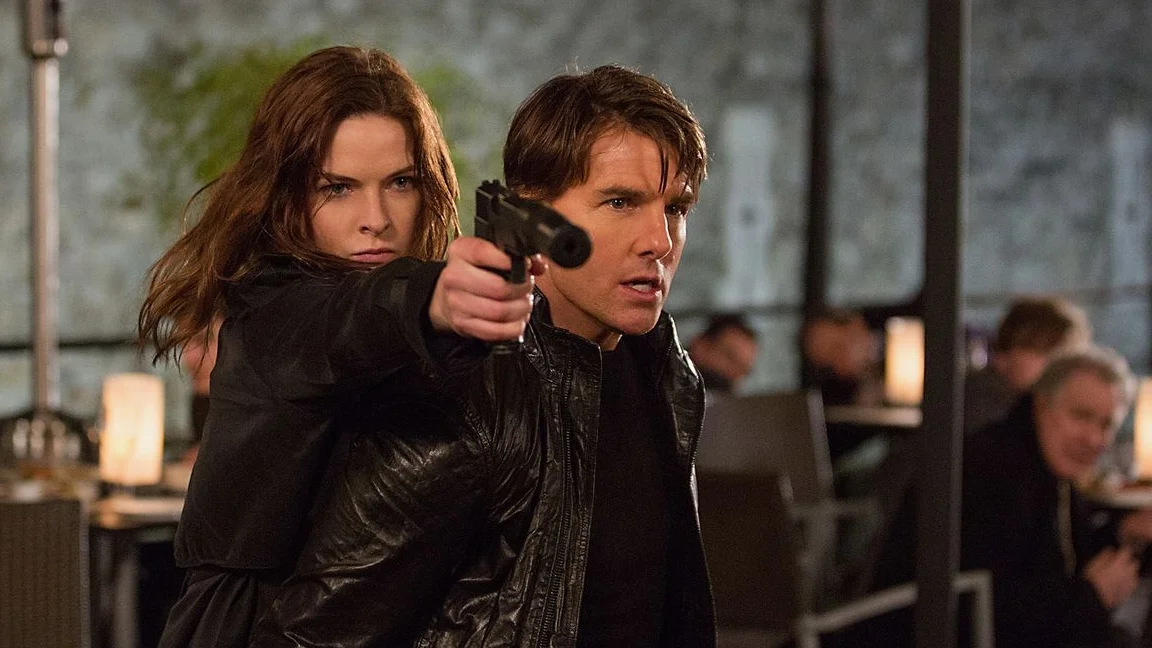That’s Not Impossible: The Bridge in Mission: Impossible III
Fair or not, the one thing the Mission: Impossible series is known for above all else is the exhilarating action sequences, the lion’s share of which are done as practically as possible. As the series has progressed, so has Tom Cruise’s commitment to performing these stunts himself - with the assistance of an army of stunt coordinators, technicians, and performers on hand. Cruise has become a bonafide stuntman on top of being one of the most charismatic movie stars working today. So with Mission: Impossible - Fallout releasing this week, the TFS staff has decided to focus in on the most iconic and impressive stunt of each film.
When you think of the standout sequences from the Mission: Impossible films, it’s probably going to involve Ethan Hunt doing something ridiculously dangerous and amazing to save the day – the entire series hangs on that premise. However, what it also appealing in these films are the moments when everything goes wrong in spectacular fashion. One of the more memorable sequences in the franchise, in my opinion, is the bridge extraction scene in which Owen Davian (Philip Seymour Hoffman) escapes from Ethan Hunt with the assistance of several drone missiles and a helicopter.
On its face, the sequence seems fairly pedestrian for a big budget action tent pole. However, the execution of the stunt on the Chesapeake Bay Bridge somehow found a way to come off as iconic, mostly due to the element of surprise and masterful direction. We’ve been lulled into thinking that when a character runs at the camera and there’s a large explosion behind him, they are going to fly at us. We’ve see this a million times. So, when Tom Cruise is doing his trademark run at the camera and the blast launches him to the side, smacking violently into a car, it’s unexpected, visceral, and iconic.
To get that sequence nailed, only the second unit had to travel to the actual Chesapeake Bay Bridge. The rest of the crew filmed on a set in Calabasas, California, with ILM adding in the water, the plates of Virginia in the background, and the rest of the bridge to make it match the look of the actual location.
The dramatic moment of Tom Cruise dazed in an upside-down car, being alerted of an incoming missile, and then sliding a briefcase across the bridge, is edited masterfully by Maryanne Brandon, Nick Gibbs, and Mary Jo Markey. Cruise then runs away from the turned over SUV as the missile strikes it, exploding the wreck into a ball of flames. What sells the moment is Cruise’s shocked reaction as he swings into the car and the whole time, the hand-held camera is backing up, taking in all the madness. There is also an on-set special effect of the Dodge’s window that breaks upon impact; a small detail that provides a surprising amount of satisfaction, given that so much is going on in the shot. I would be remiss if I didn’t mention the plane soaring right over the bridge at close range, scaring the bejesus out of Ethan Hunt.
According to sequence supervisor Todd Vaziri on his website VFXHQ, this stunt wasn’t expected to be the cornerstone of the marketing of the film, but it was always viewed as a tough shot. Visual effects supervisor Roger Guyett and director J.J. Abrams drew up a plan in which Tom Cruise was on a wire, running full speed at the camera, with a rig jerking him sideways rather violently, smacking him into the Dodge, which had plenty of padding. The ground was also made up of padding, made to look like the highway. Due to safety concerns, the artists at ILM added the explosions later.
The following moment with Cruise having to throw his weapon across a gap in the bridge and soon after jumping across the divide, barely making it, is equally thrilling. When Cruise is hanging from the busted up rubble, struggling to pull himself up, he’s actually on the set in Calabasas, with the plates of the water in Virginia composited by ILM. What’s impressive about this moment is that J.J. Abrams’ camera moves are real; it’s just the background elements that are digitally enhanced. This choice makes the action feel much more raw and alive. The action that you’re truly following – Cruise running on the bridge after Philip Seymour Hoffman – is coming from a point of view that feels legitimate and not “overly digital.”
Todd Vaziri had this to say about the stunt, “We had two cameras on a rig, with their lenses as close together as possible, basically recording twice as wide a field of view with some overlap for both the Tom pass and the explosion pass. We also had a third anamorphic camera behind the main rig for both passes. In the end, that meant six pieces of footage, all non-motion controlled, that needed to be blended together: the Tom stunt, the explosion, the helicopter behind the truck, the exploded gap in the bridge, the bridge extension, and the Virginia water.”
So, obviously, there were a lot of visual effects that went into the bridge extraction scene, but it all started on a bridge set with classic wirework. These days, action sequences can sometimes appear too frenetic, with so many visual effects being thrown at your face, you can’t really tell what you’re supposed to feel. This sequence in Mission: Impossible III goes to show that old school filmmaking (with loads of assistance from effects artists) is still alive and well.














